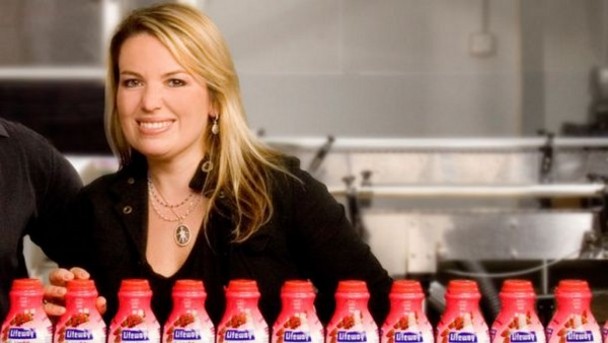A young entrepreneur uses smart marketing and acquisitions to build on her late father’s vision.
Ten years ago, when Julie Smolyansky took control of Lifeway, the company her father founded in 1986, she was barely out of college. But, thanks to a combination of savvy marketing tactics and a number of strategic acquisitions, Smolyansky has grown revenues by more than 560%, to $80 million.
Smolyansky has also become a role model for immigrant entrepreneurs and female CEOs, and her recent marketing campaign “Mother Culture” (featuring a photo of herself while she was pregnant) created major buzz.
“My father left us a company that ran like a well-oiled machine,” she says. “I was able to use that foundation and take the business to the next level.”
Smolyansky suggests these tools for creating greater levels of success in your business:
Improved the Packaging
Smolyansky’s first move was to focus on the packaging of the company’s core product, Kefir. According to Smolyansky, when she became CEO in 2002, the look was what she describes as “old world, even ugly.” But Smolyansky realized that, with a small advertising budget, boosting sales hinged on creating inviting packaging that practically made the product jump off the shelves. The look of the product had to become its own advertising. To that end, Smolyanksy hired an outside design team. Over about a year, using ideas and suggestions from Smolyansky, they came up with a look that kept the health-oriented spirit of the product, but with a more fun and trendy appeal. The result: The product started flying off the shelves. “It was probably the single most important step we took,” says Smolyansky.
Recognizing the Importance of Ethnic Markets
But that was far from the only step. Smolyansky knew that an increasing consumer interest in healthy food meant there was plenty of opportunity to extend the brand into other product lines. And, she recognized the potential in tapping additional ethnic markets that had an affinity for kefir-style drinks. “We wanted to continue our tradition of being first to market, pioneering innovative products that are ahead of their time,” she says.
For that reason, she made new-product innovation a priority, churning out a series of introductions over a period of several years. In 2006, she introduced ProBugs, a no-spill kefir product for children, as well as Greek-style kefir.
In 2007 came Lifeway Lassi, targeting Indian and other ethnic markets; and in 2008, a line of probiotic snack bars. Next year, according to Smolyansky, she’s planning to launch several new products aimed at their existing consumer base, as well as expanding market share by introducing their core kefir line to new customers.
Aggressive Acquisitions
Smolyansky further increased company size through an aggressive acquisitions strategy, buying their two largest rivals.In 2006, she purchased Helios Nutrition; three years later, she bought Fresh Made Dairy. The moves accomplished a number of goals. Of course, they eliminated any serious competition to their core product. But, in addition, says Smolyansky, “we boosted sales, distribution reach and market share—all at the same time.”

